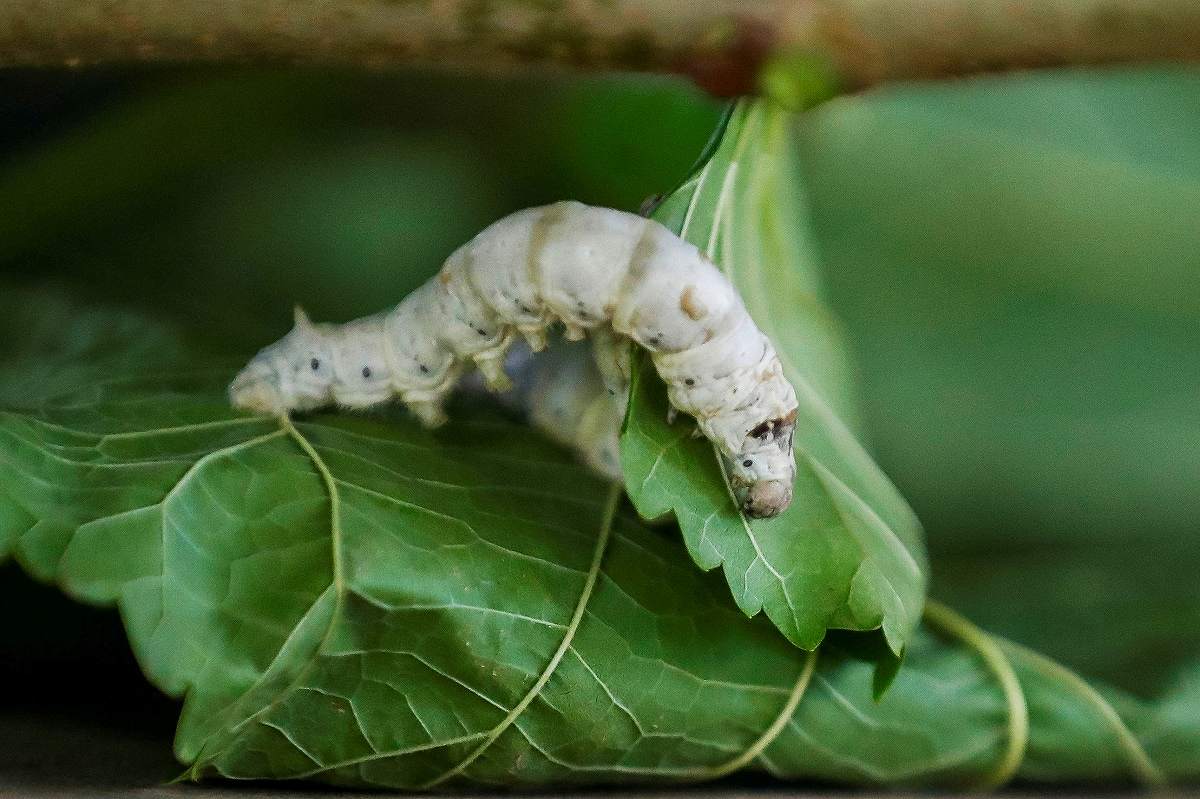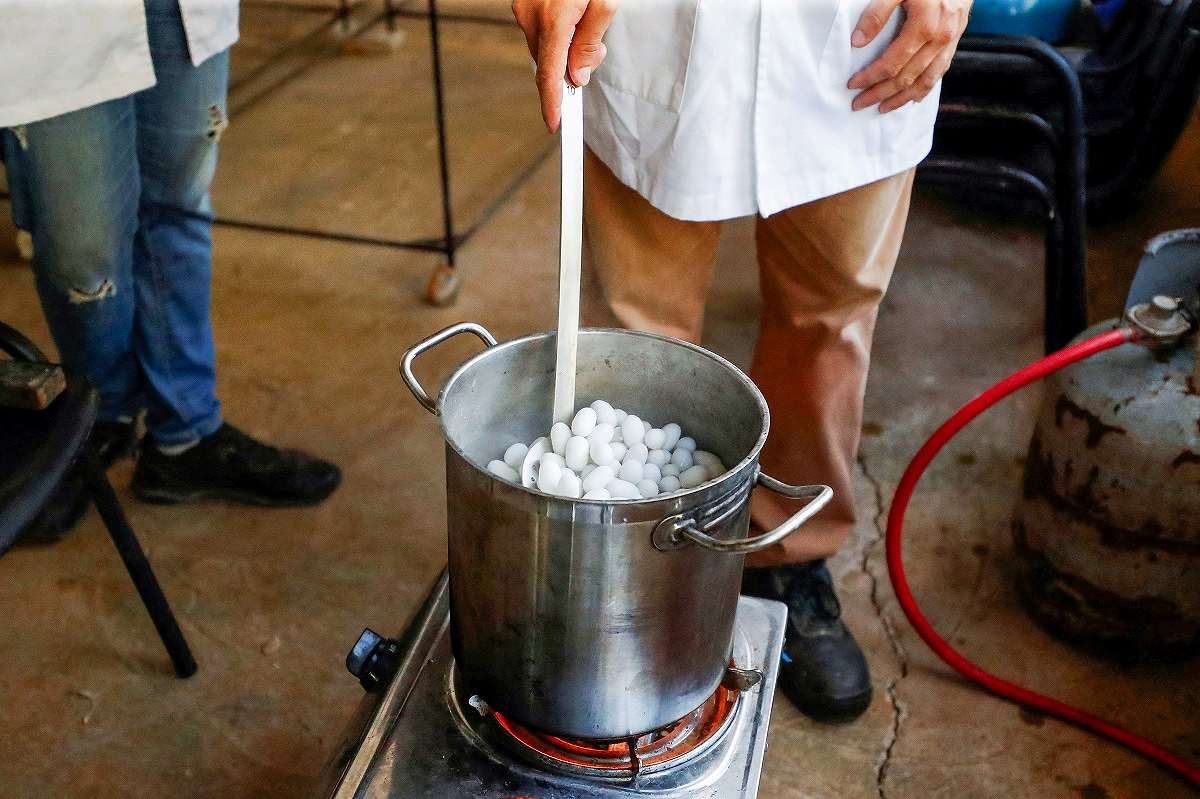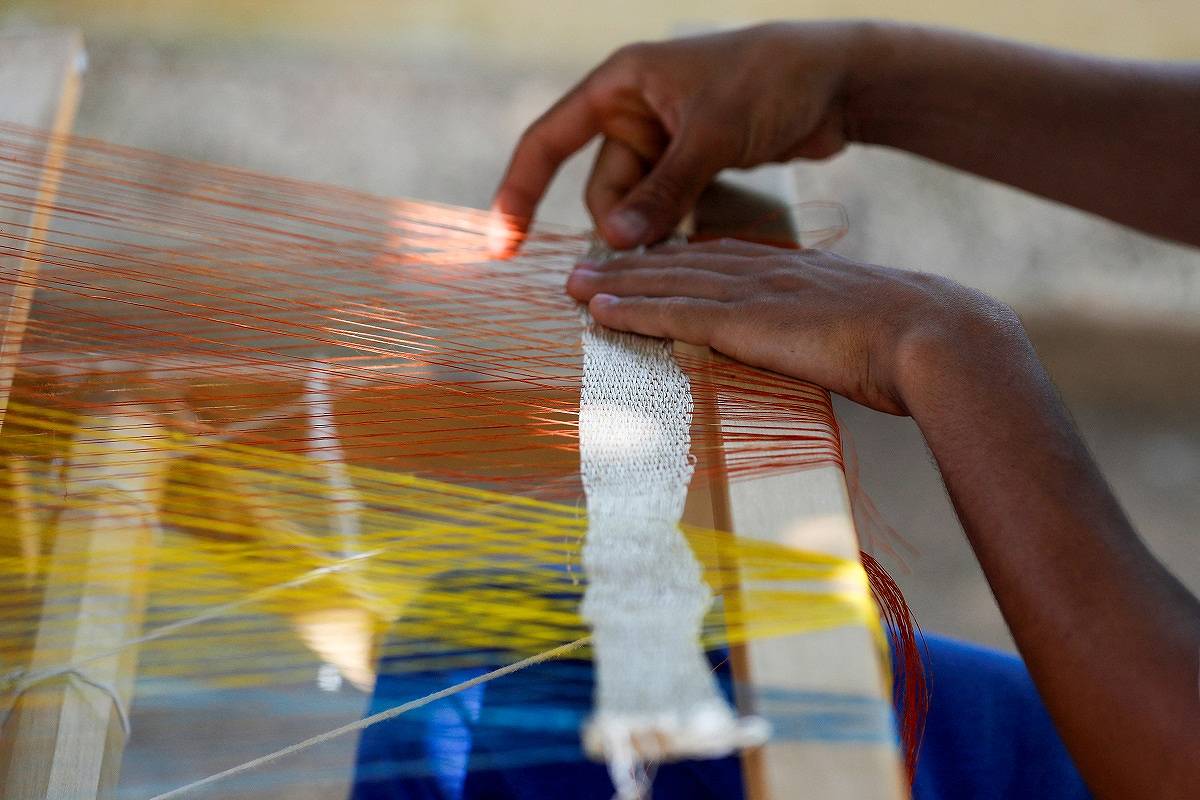Workers prepare silkworms on a farm in Matanzas, Cuba, on May 16.
16:24 JST, June 6, 2024
INDIO HATUEY, Cuba (Reuters) – Cuban biochemist Dayron Martin, dressed in a white lab coat and jeans, looks over a table full of silkworms with the admiration of a proud father.
Hundreds of cream-colored caterpillars writhe across a bed of dark green mulberry leaves – the worm’s favorite food – freshly picked from bushes just outside his laboratory.

A silkworm eats mulberry leaves on a farm.
This is the reward, he says: the worms – native to Asia but fortunately transplanted to Cuba – spin a fine, shiny white fiber that he hopes will be used by Cuban artisans to make products ranging from dresses to blouses, shirts and even cosmetics. .
Martin, head of the ArteSeda project at the ‘Indio Hatuey Experimental Station’ in western Cuba, oversees the process from start to finish, from raising the caterpillars to producing their favorite food and then harvesting their side.
“It’s an ancestral process that goes back more than five thousand years,” Martin says of the traditional Chinese practice, although he notes that it has only recently been introduced to Cuba.
“[The worms] need very specific conditions,” he said.
Cuba meets the requirements. Mild temperatures, breezy trade winds and a year-round growing season provide a happy home and plenty of food for the worms as they have made the transition to their new home.
Silkworms are the larva of a moth (Bombyx mori) native to Asia. They spin a cocoon of silk fibers that has long been used as a source of commercial silk.
The Cuban project, which began with funding from the European Union, the Cuban government and more recently the French government, aims to teach artisans the process and allow them to breed their own worms from scratch.
Artisans then use their silk to make homegrown products that they can sell to tourists and locals alike, says Dalgi Chaviano, owner of a small shop in Havana that produces cosmetics, handicrafts, soaps, fabrics and prints.
Chaviano said she recently received permission from the local government to grow mulberry plants and silkworms in Havana, allowing her to produce her own raw material.
“Every day I discover something new related to silk,” Chaviano said as she put the finishing touches on a pair of red silk earrings.

Workers prepare cocoons for silk production.

A person weaves a silk cloth.



